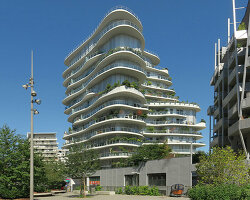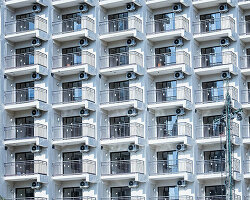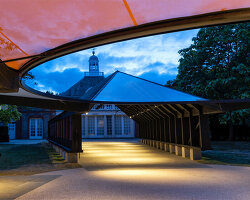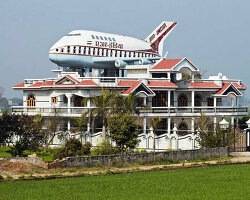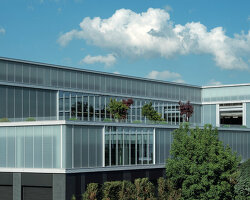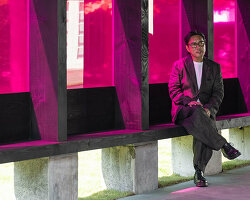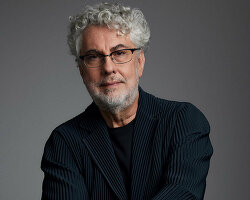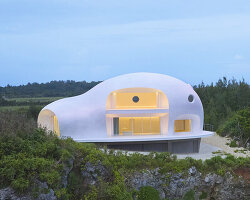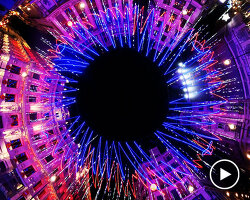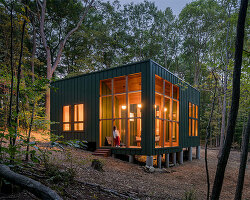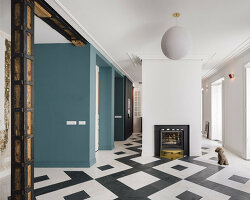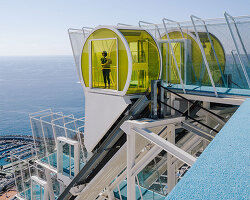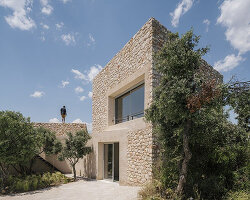led by miguel de guzmán and rocío romero, imagen subliminal is an architectural film and photography studio based in new york city and madrid. both de guzmán and romero studied architecture and use this knowledge to artfully document projects that range from a reconfigurable pneumatic structure in paris to a residential building in brooklyn with cascading rooftop terraces. ‘our training made us naturally focus in architectural photography as it is a way to keep thinking, and somehow working, as architects,’ the duo tells designboom. ‘it also provides the chance to visit and discuss amazing buildings with the team that created them.’
miami museum garage by workAC | read more about the project here
top video: spanish pavilion at the 2021 venice architecture biennale | read more about the project here
‘our objective is not only to capture a scene, but to capture the atmosphere that the architect has in mind for a project,’ explain de guzmán and rocío romero, who often include people in their photos or films to help to develop a narrative. ‘we even introduce fictional characters that personalize the architecture we show,’ the duo continues. ‘we think that this fictional life provides a more intense experience and information about the real building than the abstract empty images.’
read our interview below to learn more about the work of imagen subliminal, and see a selection of films and photographs personally selected by miguel de guzmán and rocío romero.
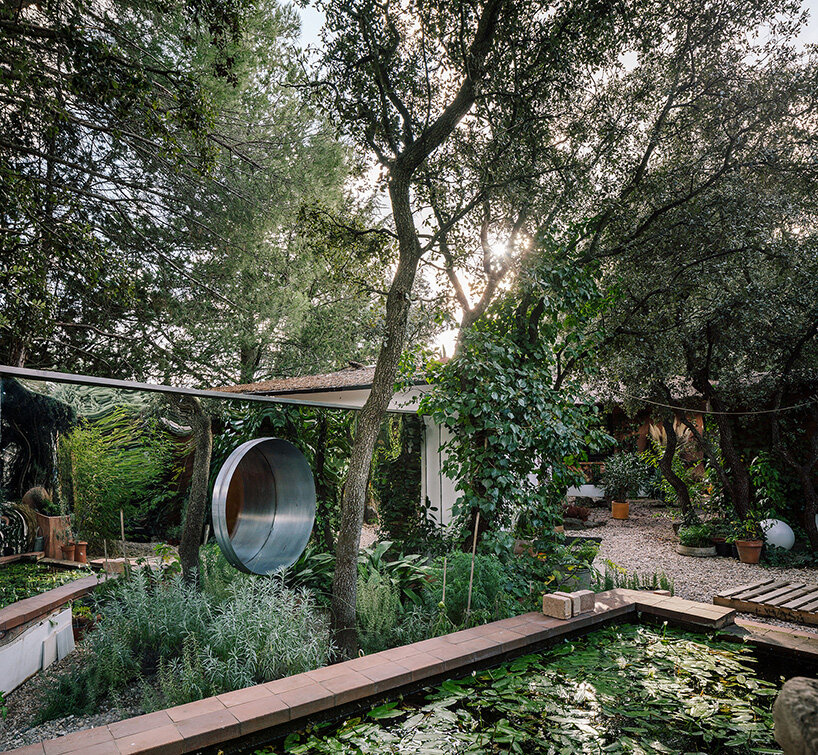
la madriguera by delavegacanolasso
designboom (DB): can you start by telling us a little about your backgrounds and how you became involved in architectural photography?
miguel de guzmán and rocío romero (MdG + RR): we are both architects that started our work as photographers during college. miguel de guzman studied at ETSAM madrid and after some years of combining architectural practice and photography, founded imagen subliminal and became a full time architectural photographer. rocío romero got her architecture degree at granada and studied photography in madrid where she joined imagen subliminal. our training made us naturally focus in architectural photography as it is a way to keep thinking, and somehow working, as architects. it also provides the chance to visit and discuss amazing buildings with the team that created them.
100 norfolk by ODA new york | read more about the project here
DB: how does the partnership work between the two of you at imagen subliminal?
MdG + RR: our work as a team is really what has driven our evolution in the field of documenting architecture. coming together from different professional areas has made us find common ground in our ideas and work styles and to experiment with how we tackle projects. this common ground is essential in creating a coherent image that showcases imagen subliminal as a unit. I believe it’s what reinforces us and allows us to bring together everything we have learned and discovered individually. the cohesion exists because we share the same ideas and also same work process and tools. we also keep a constant discussion and review of each others work and distribute tasks on the same project.
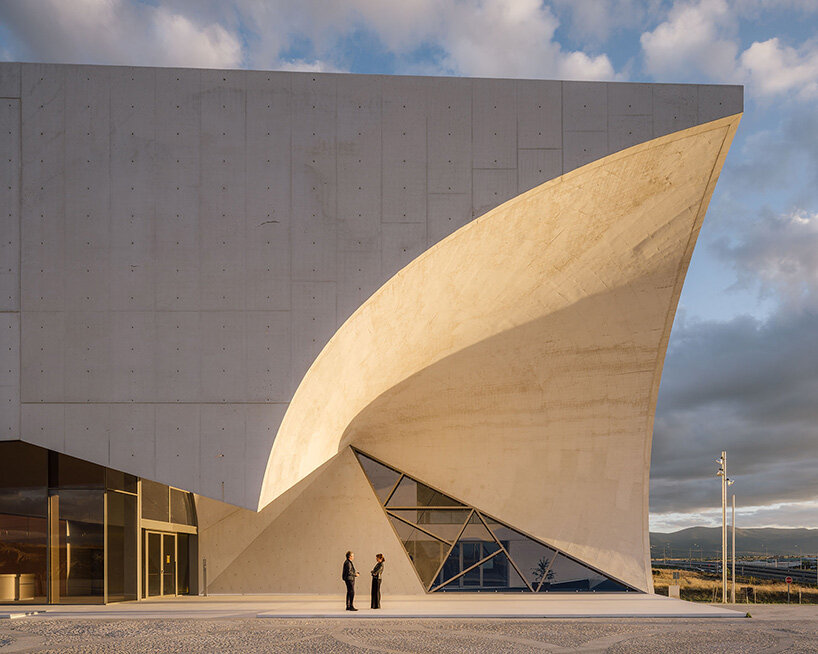
center for arts and technology in segovia by sancho – madridejos architecture office
DB: where are you currently based? what effect has the pandemic had on your travels and your work?
MdG + RR: we have two bases: new york city and madrid. from there we can travel wherever necessary. since last year, we have taken pictures in france, belgium, switzerland, mexico, japan, china, and elsewhere. after working several years together, we actually are based in two different locations: miguel between new york city and madrid and rocío in madrid. each one of us shoots in a specific area, but usually we do planning and post-production together. that keeps us focused and evolving together technically and in ideas.
housing in cantalares, murcia by by sancho – madridejos architecture office
MdG + RR (continued): the lockdown was much stricter in madrid than in new york and it forced us to suspend a lot of our work since it’s done strictly in person. however, we’ve been able to dedicate time to organizing and getting up to date with, and meditating on, our work. in terms of our digital work and collaborations, there hasn’t really been a change since it’s been done remotely for years. the biggest challenge isn’t what we’ve done up until now but rather the unknown brought by the coming months — the difficulty in traveling and the crisis in both the architecture and construction sector… on the other hand, many challenges and opportunities have come about thanks to digital communication and the need to find new languages and tools to share ideas; areas that we have a lot to contribute to.
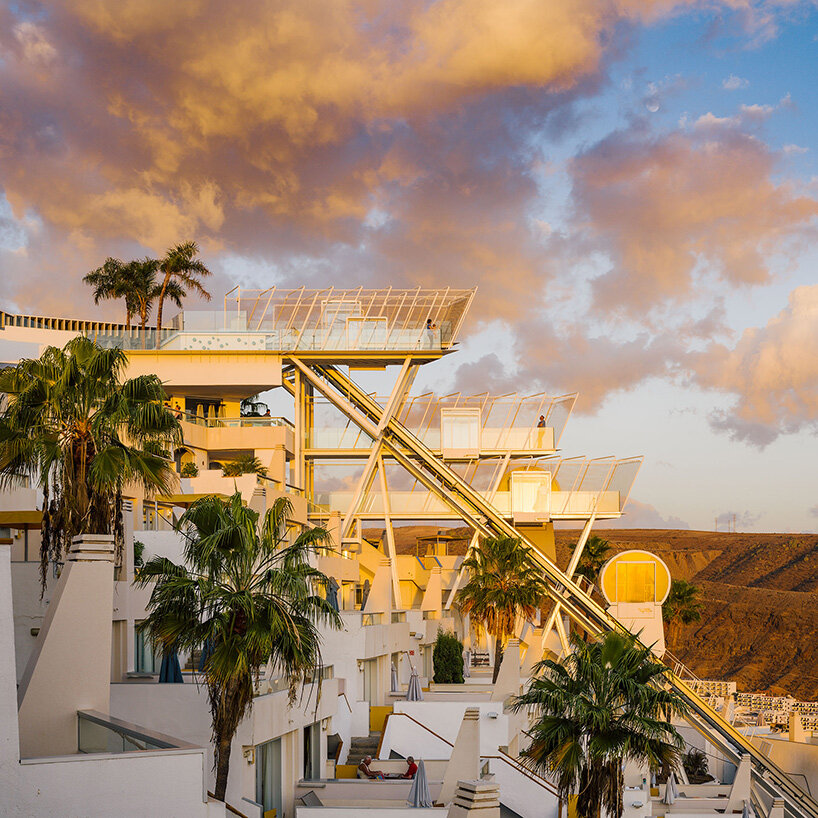
mogán funicular by atelier lopezneiraciaurri arquitectos
DB: how do self-initiated projects compare with commissioned assignments? do architects give you a specific brief?
MdG + RR: we offer experience and expertise to architects who want to communicate their vision of a project and the ideas behind it. we put extra focus on the collaboration with the clients, from planning the report to the post-production and distribution. our objective is not only to capture a scene, but to capture the atmosphere that the architect has in mind for a project.
YOYO light installation by brut deluxe
MdG + RR (continued): our clients are mainly architectural firms but also editorial, developers, construction and real estate companies. we like to keep a close connection with our clients, share ideas and experiment together. we think that the architectural photographer serves as a translator between the architect’s ideas and the public. it is important to have a good understanding of the client’s work process behind a building to be able to choose the best way to communicate it. we think that the advantage of using professional photography in architecture is not only due to the knowledge and experience, but also the will to understand the project and the ability to collaborate in order to study and create a narrative that transmits ideas in the most visually appealing way possible. architects often build something that can’t be seen, only lived. our goal is to get everyone to experience it.
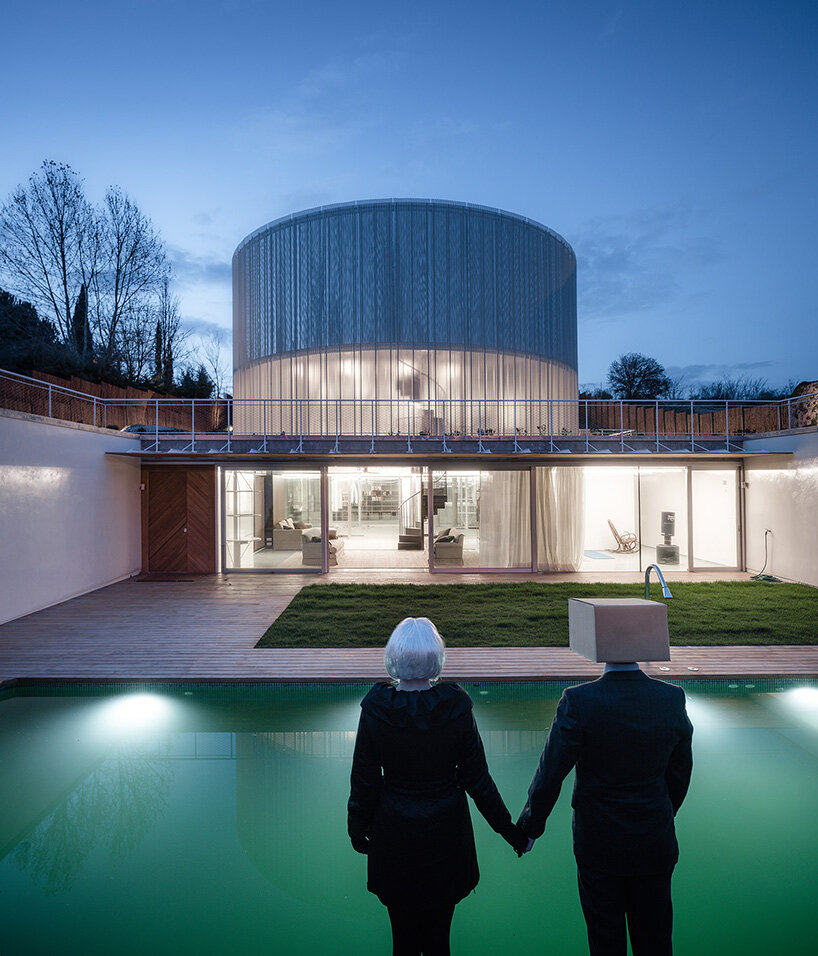
casa tobogan by Z4Z4 | read more on designboom here
DB: you have used a variety of characters in your photos, including mermaids and bears. how do you choose these figures?
MdG + RR: it depends on the project, but we usually like to include people in order to help to develop a narrative. we even introduce fictional characters that personalize the architecture we show. sometimes it is possible to capture the real life on the site, but we like to recreate a possible life with actors so we can show how the ideal experience is, and reinforce the architect’s idea on the use of the building. the film/photos can become a user’s guide of the building. we think that this fictional life provides a more intense experience and information about the real building than the abstract empty images. we introduce simulations or fictions that reveal realities that are not directly visible or not yet present at the moment of the shot. it’s very important for us to make these simulations evident to let the spectator notice that there is a game. architectural ideas can be beyond reality.
casa paco apartment by zooco estudio
DB: how do you prepare in advance of a shoot?
MdG + RR: we try to understand both the project and the authors. we ask for plans, renders and site images, and also we like to have a conversation with the architects. usually there is also a site visit before we start shooting. it’s also important to study the orientation and weather to organize the session.
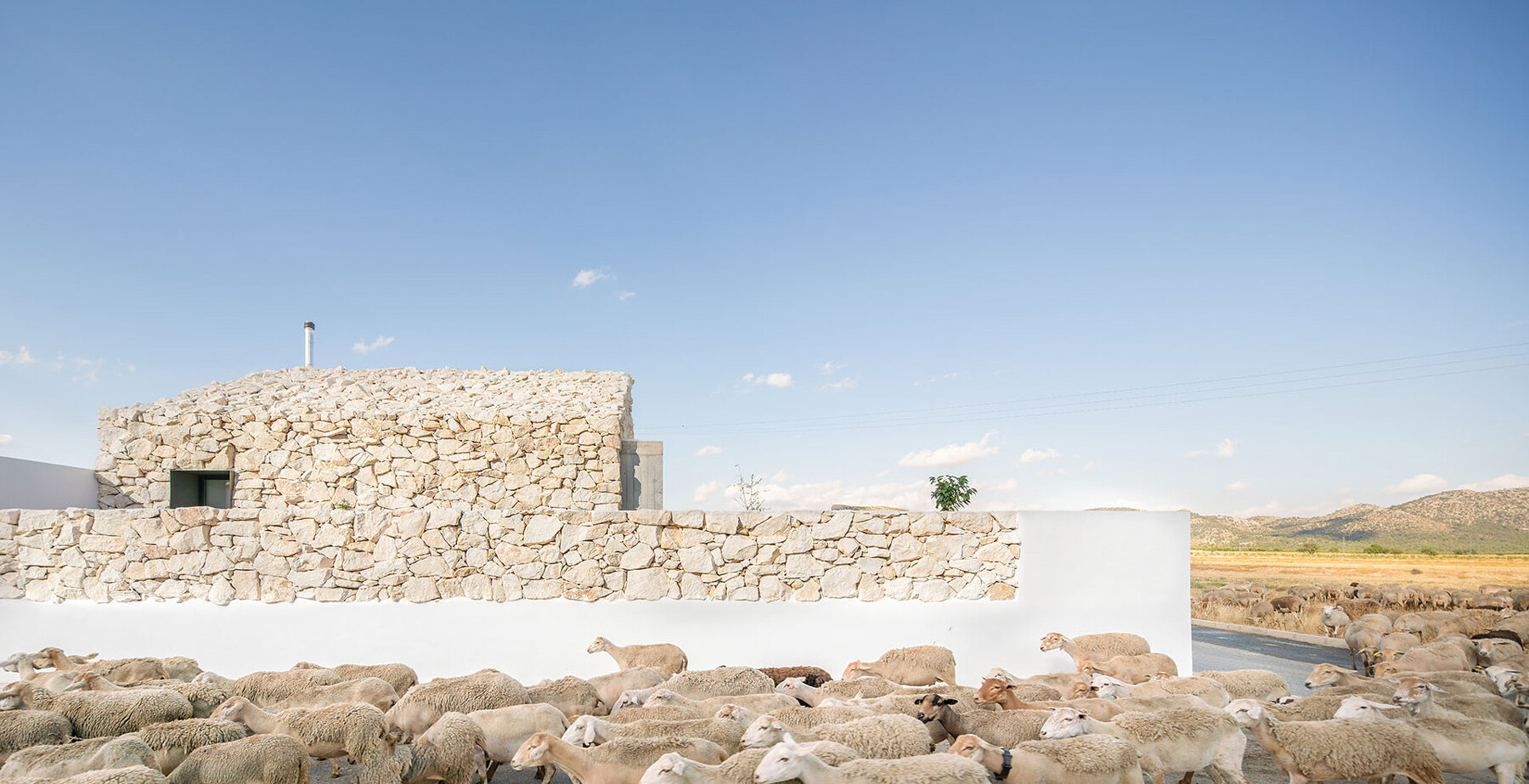
calixto house by GRX arquitectos | read more about the project here
DB: when you arrive on site, what is the first thing you do?
MdG + RR: a quick walk-through in order to have in mind the most important points of view and organize the schedule. we like to leave space for improvisation, but always start in a systematic way.
RUN-RUN-RUN by andrés jaque / office for political innovation
DB: how much work takes place after a shoot, before the images are ready to publish?
MdG + RR: a lot — we consider post production as a crucial part of the image construction. especially color correction and grading: each project has a specific atmosphere and we try to enhance that through editing. many times we shoot many photos in order to compose one final image, so the image creation takes place both at the shooting time and afterwards.
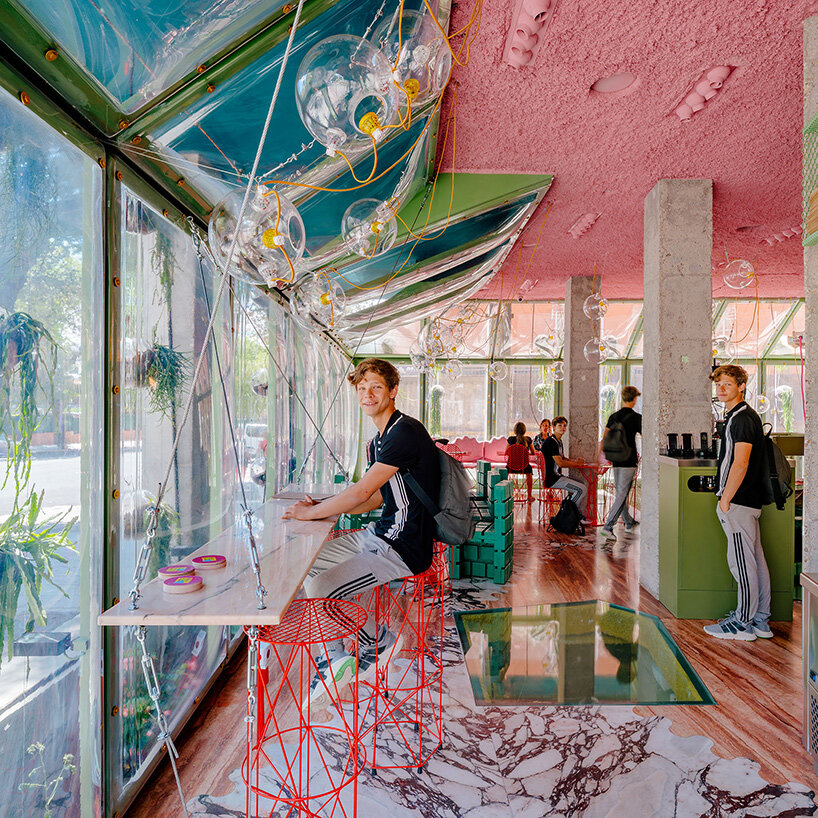
RUN-RUN-RUN by andrés jaque / office for political innovation
DB: is there a particular message or sense that you want your images to convey?
MdG + RR: architectural photography, as a form of communication, can help share ideas, spark discussions, and bring light to situations and problems as well as how to face them. we understand architecture as something beyond materiality, it’s not just about the game of light over the volumes, it’s a complex environment that includes in the design many social, economical and political issues. the architectural object is a developer and mediator of social relations, a cultural construction that evolves. there are many layers of information that we would like to introduce in the image.
yojigen poketto by elii
DB: what advice would you give to today’s young and aspiring photographers?
MdG + RR: experiment a lot, adopt the tools that become available, and think of new ways to share architectural values and ideas. study and try to understand the ideas that are behind the projects. think that the photographer not only documents architecture, but becomes part of its evolution. we feel this is how our role as photographers will continue being relevant in the realm of architecture.
architectural photography (324)
architecture interviews (267)
imagen subliminal (miguel de guzman + rocio romero) (45)
PRODUCT LIBRARY
a diverse digital database that acts as a valuable guide in gaining insight and information about a product directly from the manufacturer, and serves as a rich reference point in developing a project or scheme.
